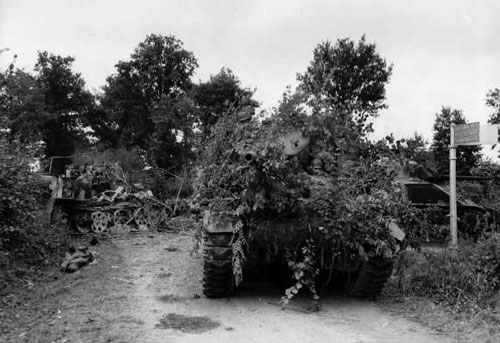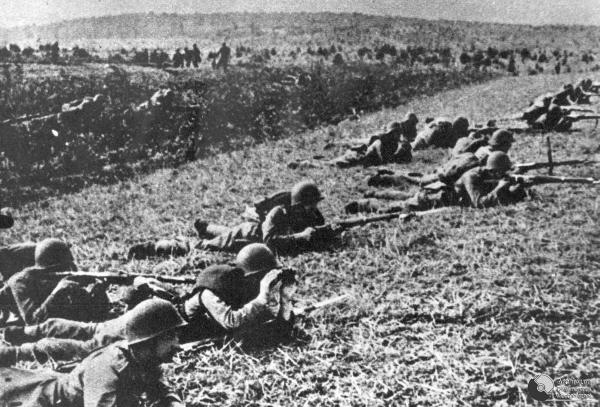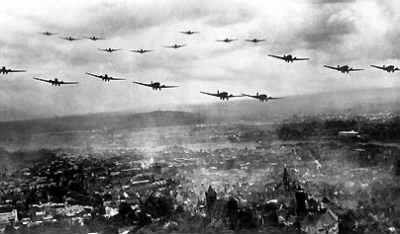Kesselschlacht!
"After the capture of Warsaw, the poles moved their capitol to Krakow and the German forces completely surrounded 24 polish divisions in a huge pocket from Poznan to Ostroleka. The enemy divisions were caught in a deadly trap, running short of supplies, under continuous air bombardment and being attacked from all sides by superior german forces, they were soon to be anihilated in a massive cauldron battle"
Battle of Bydgoszcz (September 13-18, 1939)
Strength: 284,000 germans vs 88,000 poles
Field Marshal von Blomberg himself took command of the 2. Armee and 9. Armee and launched an massive offensive operation towards Bydgoszcz with the objective to break the cauldron in two and and destroy the enemy stronghold that has been created in the area. The polish forces, knowing that they are surrounded by an enemey superior in numbers, set up a strong all-round defensive line with all the men that can hold a weapon, even wounded soldiers take a rifle and waith for the onslought to begin.
At 15:00 hours, the german offensive begins, 2. Armee driving along the Warta river to cut of Poznan whilt the 9. Armee drives along the Vistula to deny enemy reinforcement operations.
By the evening of September 14th several elements of polish forces are encircled trapped betwen the german forces and Vistula river, they surrender soon after the german forces assaulted their positions.
The battle of Bydgoszcz was becoming an graveyard as casualties become to mount in the polish side hour by hour, by September 16th, 2 polish divisions were anihilated and the rest were at least 50% understrenghth.
On the evening of September 17th, german forces launch a massive assault on the enemy positions, 200,000 men converging on a battered polish defense force. In the early morning of September 18th, the polish leave their positions and retreat towards Wlokawek.
German infantry resting on a side of a road
(September 13-15, 1939)
Strength: 350,000 germans vs 90,000 poles
At the same time as von Blomberg's forces were attacking Bydgoszcz, General von Brauchitsch's 5. Armee and General List's 13. Armee were launching their own offensive towards Poznan.
The 2 day long battle culminated in the fight for the city of Poznan (a major city and industrial center), the city was continuously bombed by Luftwaffe forces for 48 hours, destroying 48% of the urban structures.
By the time the poles begun to retreat towards Bydogszcz, Field Marshal von Blomberg's forces were driving to stop their retreat at the Warta river.
German bombers flying over Poznan
(September 13-17, 1939)
Strength: 156,000 germans vs 65,000 poles
Another push into the Cauldron was made by General Dollman's 8. Armee with suport elements from the 1. Armee and 3. Armee. The german forces striking from 3 directions towards Torun, outflanked the polish infantry divisions and caused massive damage in the organization levels of the polish forces.
Several elements of the 1. Armee attacking from Allenstein even succeded to strike the rear areas of 2 polish infantry division making the entire eastern wing of their defense line to colapse.
By the noon of September 17th the polish forces were retreating from all directions towards all directions, General Dollman said: "The poles were routing, running for their lives after our artillery raised so much dust, bones and flesh of the ground that the battlefield was looking like a giant hurricane of death"
German artillery firing on polish positions
(Septhember 13-14, 1939)
Strength: 82,000 poles vs 21,000 germans (42,000 by September 14)
On September 13th, the polish forces from Plock, Radom and Wlokawek launched an attack with 7 infantry divisions on Warsaw, trying to breakout some of the polish troops trapped in the Kesselschlacht. Guarding Warsaw was Guderian's II. Panzerkorps made of one panzer and one motorized infantry division.
Was the first time when the polish were superior in numbers to the germans, with an almost 4 to 1 ratio, but that didn't stop Guderian from effectivly defending the city and deploy a delaying operation to gain more time until reinforcement's arrived. Guderian said: "The poles were attacking from all direction while we were counterattacking in all directions and holding every ditch in the Warsaw area, they were so desperate that they even mounted several mass assaults on our panzers throwing cocktail molotovs, assaults that ended in a blood of bath"
At noon, September 14th, Manstein's VIII. Panzerkorps arrives and hits several polish units from behind, running through theire offensive positions to conect with Guderian's forces and lift the siege of Warsaw.
Soon after that, the polish forces cancelled the attack and retreated towards their previous positions.
German panzergrenadiers fighting in the ouskirts of Warsaw
Situation of Fall Weiss after 19 days from the beginning of hostilities (German forces captured Sosnowiec and Tarnow without resistance)
(September 19-20, 1939)
Strength: 335,000 germans vs 44,000 poles
German forces under the command of General von Kluge mounted a massive attack from 4 directions on Plock, the battle was short and violent, lasting for 27 hours and ending in a encirclement of almost all polish forces at 02:00 hours September 20th by elements from Guderians's and Nehring's panzer forces attacking from the flanks and rear of the enemy positions. An utter defeat for the polish army.
Panzer columns moving to encircle the enemy forces in Plock
(September 22, 1939)
Strength: 336,000 germans vs 49,000 poles
The last of the polish forces trapped in the Kesselschlacht were surrounded in Wlokawek, low on morale and supplies, bleeding and in hunger, the polish soldiers kept fighting. The rain started to pour over the battlefield when Field Marshal von Blomberg's forces engaged the enemy.
After a short 4 hour battle, the polish commander raised the white flag to end the torment of his soldiers that were getting pounded from every direction.
Wlokawek pocket
Battle of Radom Pocket
(September 21-22, 1939)
Guderian said: "In the morning of September 21st we successfully enveloped 3 infantry divisions in Radom, we trapped the rats!"
141,000 german troops converged on the polish from all directions, panzers, infantry and air support poured on them for 24 hours until all that was left for them to do was to surrender their arms and be captured by the gemans. Guderian's panzers en entered the city in the morning of September 22nd and paraded under the frightened looks of polish citizens
Radom Pocket
Siege of Krakow
(September 14-25, 1939)
Strength: 156,000 germans (culminating at 455,000 germans and hungarians on September 24th) vs 26,000 poles.
Field Marshal von Rundstedt's armies were closing down on the last important objective of Fall Weiss, the fortified city of Krakow, an important industrial center of Poland. The 11 days long siege of Krakow was the most bloody battle of the invasion of Poland, german forces taken the most casualties.
The fighting broke out in the morning of September 14th when several infantry divisions assaulted the city's outskirts. A bloody urban battlebroke out all around Krakow, fighting for every building and street.
Reinforcements were ariving continuously, germans and hungarians were thrown into the blaze.
Rundstedt said: "Mushrooms of smoke and dust were rising from Krakow". The Luftwaffe completely obliterated the city center dropping thousands of tons of high explosive and incendiary bombs.
By September 24th, almost half a million axis soldiers were sieging the city, pushing the enemy forces out or killing them where ever they were. . .
Polish soldiers and civilians building barricades
Krakow reduced to a pile of ruble
After the fall of Krakow to german forces and Lwow to soviet forces, on September 26th, the polish are annexed and splited betweed the Third Reich and USSR as the Ribbentrop-Molotov Pact implied.
Fall Weiss was successful, celebrations and victory parades were help all over Germany and in Warsaw to show the greatness of the Third Reich to the entire world.
A grim day for all poles. . .
























